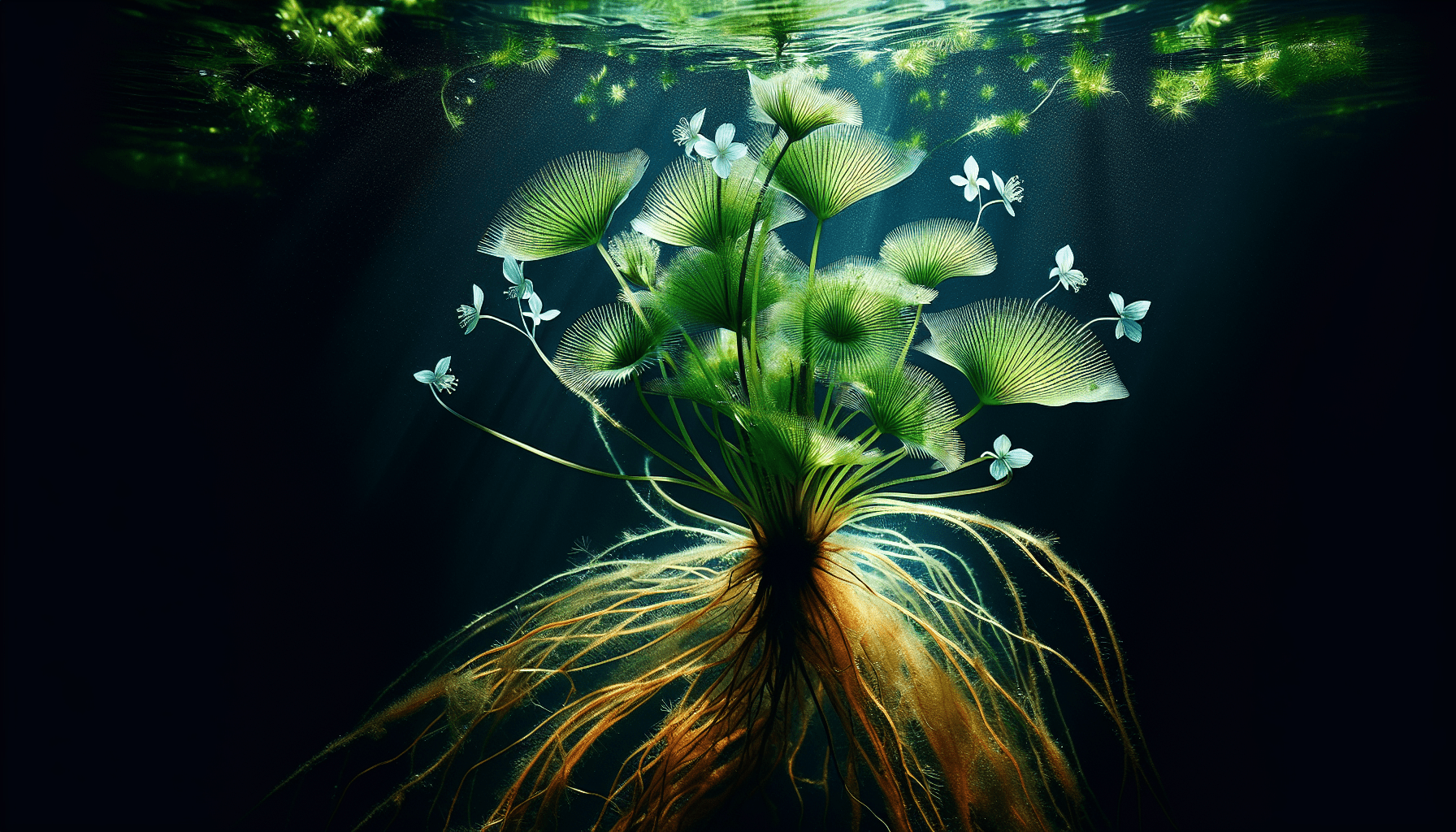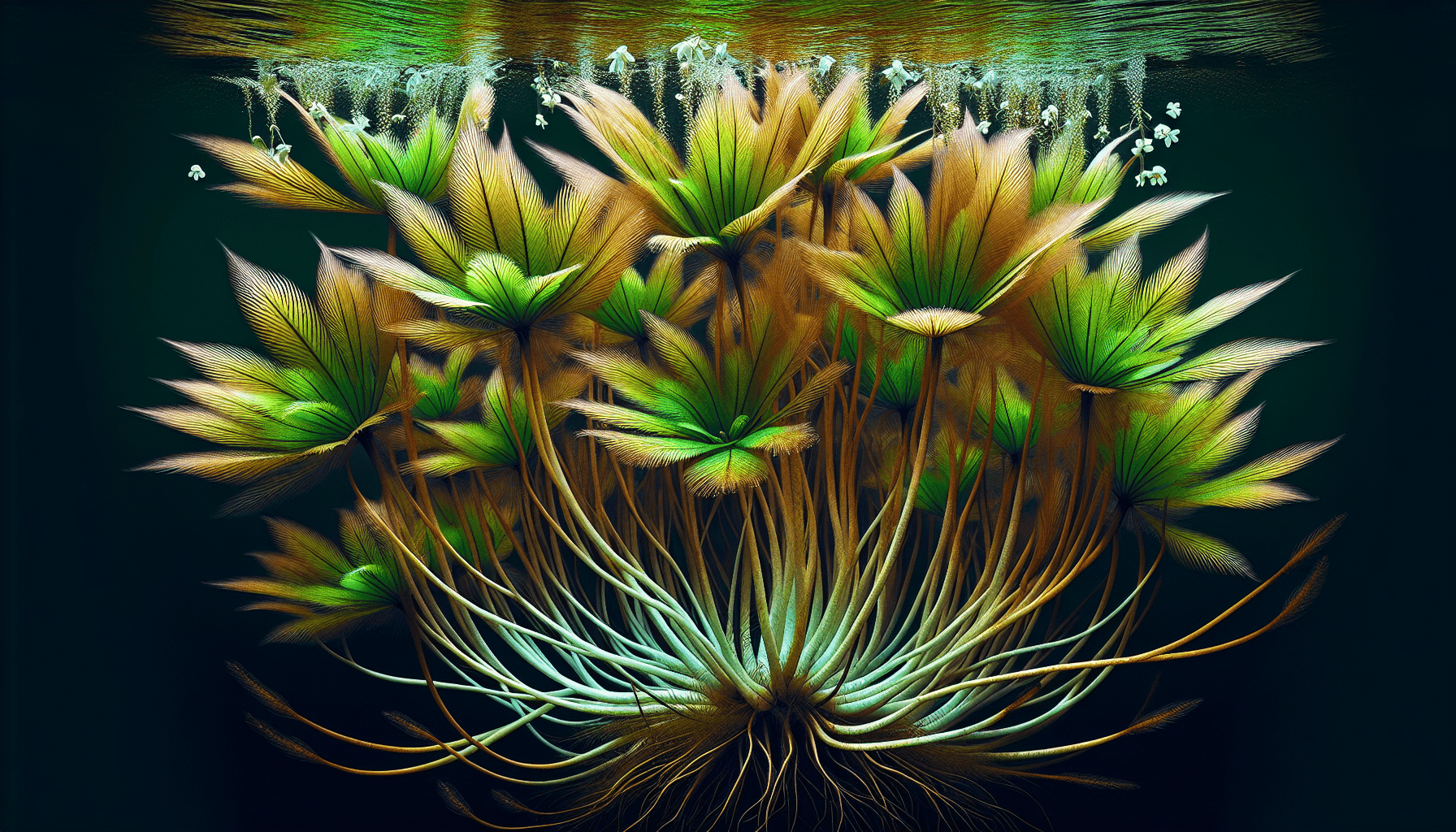As the focus of scholarly interest in limnology and aquatic botany, Lyrate Cardamine is an aquatic plant that stimulates curiosities due to its ecological significance and unique botanical features. This article will consider Lyrate Cardamine in a comprehensive manner, from its taxonomic classification and botanical characteristics to its ecological importance and cultivation process. You are expected to glean much knowledge on this unique aquatic flora and appreciate how it contributes to our understanding of biodiversity and ecosystem function upon reading through. The article, while academic, will ensure it accommodates your level of understanding and knowledge, thereby offering an engaging and insightful look into the world of Lyrate Cardamine.
Definition of Lyrate Cardamine
Lyrate Cardamine is an aquatic perennial plant belonging to the Brassicaceae or Cruciferae family, commonly known as the mustard family. This plant species is known by its botanical name, Cardamine lyrata.
Scientific classifications
Within the scientific classification system, Lyrate Cardamine falls under the Plantae kingdom. Its phylum is Tracheophyta, it belongs to the class Magnoliopsida, and is a part of the order Brassicales. Its genus is Cardamine and its species name is lyrata.
Other common names
Aside from its formal scientific name, Lyrate Cardamine is also referred to as Chinese ivy or Japanese cress. In some regions, it may also be known as Cardamine lyrata.
Physical characteristics
Lyrate Cardamine exhibits a characteristic lyrate leaf structure. This implies that the plant has pinnate leaves that small lateral lobes and a large distal lobe, forming a lyre-shaped structure. The leaves appear to hover over the water’s surface due to their long, thin stalks. They sprout bright green in color and offer a distinct asymmetrical aesthetic.
Habitat of Lyrate Cardamine
Lyrate Cardamine is native to vernally wet habitats, primarily marshy areas and bodies of fresh water.
Regions where it is naturally found
This aquatic plant is primarily distributed across Asia and can be found abundantly in countries like China and Japan. It can also be found in North American regions.
Preferred water conditions
Lyrate Cardamine thrives best in fresh water conditions with a slightly acidic pH. The water must also be relatively soft, with moderate to high lighting to support its healthy growth.
Suitable temperature and humidity ranges
This plant prefers cooler temperatures, tolerating a range from 60 to 80 degrees Fahrenheit. High humidity levels are also beneficial for its growth.

Structure of Lyrate Cardamine
This unique aquatic plant has several identifiable structural components, including its leaves, flowers, and root-stem structure.
Description of leaves
Each leaf of the Lyrate Cardamine is a single entity, with a lyre-like, or lyrate, shape. The leaflets are oppositely arranged along the stalk in an alternate layout, and they typically maintain a green hue.
Characteristics of flowers
The flowers of the Lyrate Cardamine are small and white. They bloom during the plant’s growing season, adding a delightful burst of color to the overall greenery.
Root and stem structure
The root system of Lyrate Cardamine is extensive and fibrous, which allows the plant to root itself firmly in the substrate. Its stem grows linearly, exhibiting an upright growth pattern.
Life Cycle of Lyrate Cardamine
Understanding the life cycle of Lyrate Cardamine can provide pivotal insight into its care and cultivation.
Germination process
The seeds of Lyrate Cardamine begin the germination process when the conditions are ideal – cool temperatures, high humidity, and wet substrate. The process is quite rapid, with sprouts becoming visible within a few days.
Growth stages
Following germination, the plant enters a phase of rapid growth under suitable conditions. The first leaves develop, followed by the distinctive lyrate leaves. They mature over time, eventually leading to the flowering stage.
Flowering and reproduction
During the flowering phase, Lyrate Cardamine produces small white flowers that self-pollinate. Once pollination is successful, the plant produces seeds, reproducing asexually.

Ecological Role of Lyrate Cardamine
As an aquatic plant, Lyrate Cardamine plays a significant role in its ecosystem.
Part in the food chain
Lyrate Cardamine contributes to the food chain serving as a food source for various insect species, as well as small mammals. This, in turn, supports a greater biodiversity within its ecosystem.
Impact on water quality
This plant species helps improve water quality, as it absorbs excess nutrients like nitrates from water, reducing the potential for algae outbreaks.
Interactions with other aquatic species
Lyrate Cardamine offers refuge to aquatic species such as small fish, providing them protection from predators. Additionally, its root system can provide a habitat for various species of microorganisms.
Cultivation of Lyrate Cardamine
Cultivation of Lyrate Cardamine requires knowledge of the plant’s growing conditions and maintenance needs.
Ideal planting conditions
The substrate should be kept wet while the seeds are planted. Slightly acidic pH, soft water, and cool temperature range are ideal for growth. This aquatic plant prefers moderate to high lighting conditions.
Care and maintenance requirements
Pruning the plant can stimulate growth and maintain a neat appearance. Fertilizers can also be used for better leaf color and overall health of the plant. It is important to monitor water conditions closely to ensure optimal growth.
Common pest issues and solutions
Common pests such as snails and aphids can cause damage to Lyrate Cardamine. To manage these pests, regular inspection and manual removal can be effective.
Benefits of Lyrate Cardamine
There a few notable benefits of this aquatic plant.
Advantages for aquascaping
Lyrate Cardamine is an aesthetically pleasing, green, leafy plant suitable for aquascaping. Its interesting, asymmetrical leaf structure brings a unique charm to any aquatic landscape.
Use in aquatic settings
In aquariums and ponds, Lyrate Cardamine provides shelter for aquatic species, contributing to an enriched biodiversity in the setting. Its benefits to water quality makes it desirable in such setups.
Advantages for wildlife
For ecological balance, Lyrate Cardamine serves as a food source and habitat for many insects, small mammals, and other aquatic species.
Challenges with Lyrate Cardamine
This plant species also comes with certain challenges.
Potential for invasive behavior
One of the biggest challenges is its potential for invasive behavior. If left unchecked, Lyrate Cardamine can overrun water bodies and outcompete native species for resources.
Impact on local ecosystems
The introduction of Lyrate Cardamine can disrupt the local ecosystem if it is not native to the region. The rapid growth and spread of this plant can harm native plant species and potentially alter habitat structures.
Control measures and management
Control measures for Lyrate Cardamine include regular monitoring and managing its growth. Mechanical removal or the use of herbicides can be considered in extreme cases.
Conservation Status of Lyrate Cardamine
As a widespread species, Lyrate Cardamine has yet to be evaluated for its conservation status.
Current conservation status
Its current conservation status is not evaluated as the plant is not known to be endangered or threatened.
Threats to its survival
While specific threats to Lyrate Cardamine survival are not reported, general threats to aquatic plant species such as pollution, climate change, and habitat destruction could potentially impact its population.
Conservation efforts
While no specific conservation efforts are currently targeted at Lyrate Cardamine, broader ecological conservation efforts are in place that help protect shared habitats.
Research on Lyrate Cardamine
Research on this plant species has been limited but there is potential for future studies.
Latest findings
Most recent studies revolve around the plant’s adaptability and potential use in aquatic settings, given its benefits for water quality and habitat creation.
Historical studies
Historical studies have explored the plant’s growth characteristics and reproductive strategies, in the context of its ecophysiological attributes.
Potential future research directions
Future research could be aimed at understanding the potential medicinal properties of Lyrate Cardamine, studying its invasiveness and its comprehensive impact on non-native ecosystems.